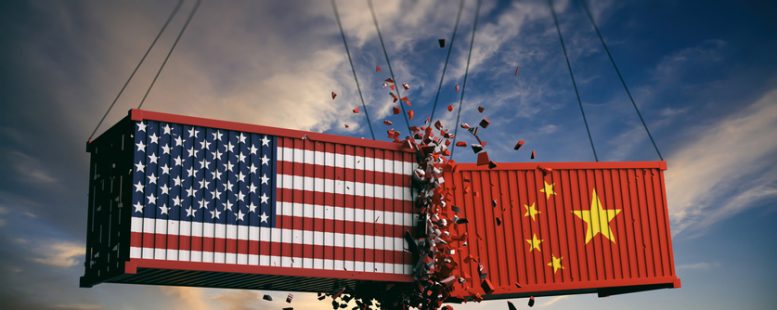Our Opinion: 2020
China leads global recovery whilst tensions escalate

Despite China’s increasingly belligerent stance provoking a global backlash, it is, by far, the world’s best-performing big economy this year. GDP grew by 3.2% in the second quarter compared with a year before. A recovery is now well under way following a 6.8% fall in the first three months of the year. Economists treat China’s GDP statistics with justified scepticism, but other indicators, such as coal consumption and traffic congestion, tell a similar story.
The recovery is being led by manufacturers. Industrial production rose by 4.8% year-on-year in June, but retail sales undershot expectations, registering a 1.8% contraction. That makes this recovery dependent on selling products into world markets, not ideal at a time of weak global demand and a growing backlash against imports from overseas. How much kit will Huawei export to the UK and the US in the future?
The GDP figures have been flattered by a massive surge in metal-bashing for infrastructure projects. Much of the funding is being channelled through chronically inefficient state-owned enterprises that don’t respond to market signals. China seems to be repeating the mistakes of its massive post-2008 stimulus, which saw vast amounts of ill-targeted infrastructure spending push the economy into a debt trap.
The Institute of International Finance’s Global Debt Monitor reports that total debt in China across households, governments and corporations started the year at just over 300% of GDP, but is now fast approaching 335% of GDP.
The backing of a one-party state means that China’s debt bubble is very unlikely to pop. But that doesn’t mean it does no harm. Research shows that misallocation of capital, especially into the bloated housing sector, acts as a slow-burning drag on productivity. With GDP per capita of $10,262, China has miles to go before it catches up with advanced economies. Overinvestment in real estate won’t help.
The positive data has made it easier for the authorities to tout a ‘healthy’ bull market. The CSI 300 is now up more than 12% for the year-to-date. Retail investors make up 80% of trading, so sentiment rules the roost. The surge has brought back bad memories from 2014-2015. Domestic shares more than doubled in seven months before losing 40%. Yet, regulators seem to have learnt their lesson, moving to tighten margin requirements to cool the euphoria. That means this rally may not have much further to run. But in the long-term, Chinese markets could become less of a roller-coaster ride.
Meanwhile, the US has ordered China to close its consulate in Houston, followed by China ordering the closure of the US consulate in Chengdu, dealing another blow to the rapidly deteriorating relations between the two countries.” Washington has been tightening the reins recently on Chinese diplomats, journalists and scholars and is considering a US travel ban for members of the Chinese Communist Party (CCP) and their families, a move that would affect 270 million Chinese. China and the US are at odds on almost every front, from trade tensions to the South China Sea, Taiwan, Xinjiang, Huawei and Hong Kong. With traditional shock absorbers such as trade, travel and educational links rendered almost useless, relations are unravelling at unprecedented speed.
Tension is nothing new. For decades, the US has debated whether to help bring China into the international fold or prevent its rapid ascendancy. However, Beijing has become increasingly belligerent and Xi Jinping’s insistence on building an army that ‘can fight and win’ is worrying. China has also intensified its efforts to control the South China Sea, a vital waterway claimed by other countries. Incidents of Chinese aggression during the pandemic prompted the US Department of State to issue a statement declaring Beijing’s claims in the region to be “completely unlawful”, signalling that the US may be toughening its strategy.
Xi Jinping has amassed more power than any Chinese leader since Mao Zedong, and he is “acting more recklessly” than China did in its days of collective leadership, according to Max Boot in The Washington Post. China’s repression of the Uighurs in Xinjiang is “rising to the level of genocide” and China has “trampled on Hong Kong’s autonomy in violation of its 1984 handover agreement with Britain”. He goes one that it has embraced “wolf warrior” diplomacy in response to criticism and that Australia’s call for an inquiry into the origins of Covid-19 resulted in trade sanctions and suspected cyberattacks.
China also imprisoned two innocent Canadians following Canada’s arrest of Huawei’s CFO. But if China’s behaviour is “thuggish and irresponsible”, Trump’s response has been “self-defeating”. His trade war has cost US consumers billions and not led to meaningful changes in Chinese trade practices. If Trump “kicks out” more Chinese students (up to 5,000 have already had their visas revoked), he will harm US universities and a tit-for-tat expulsion of journalists in the two countries makes it “harder to understand” what China is up to. More broadly, Trump’s “anti-globalist agenda” plays into China’s hands. Who benefits when Trump pulls out of the Trans-Pacific Partnership, the WTO and the Iran nuclear deal? He is “creating a power vacuum that Xi can fill”. If we are “serious about confronting China, we need to reassert US global leadership and get our own house in order”.
The fact that MPs of all parties attended talks in London with US secretary of state Mike Pompeo (who held a press conference with foreign secretary Dominic Raab) reveals a growing awareness. Beijing’s behaviour has hitherto been ignored by governments in pursuit of trade advantage. As China’s growth starts to stutter, the Chinese may be less willing to accept totalitarianism. The severity of the crackdown in Hong Kong may be a sign of growing insecurity rather than strength.
31st July 2020
